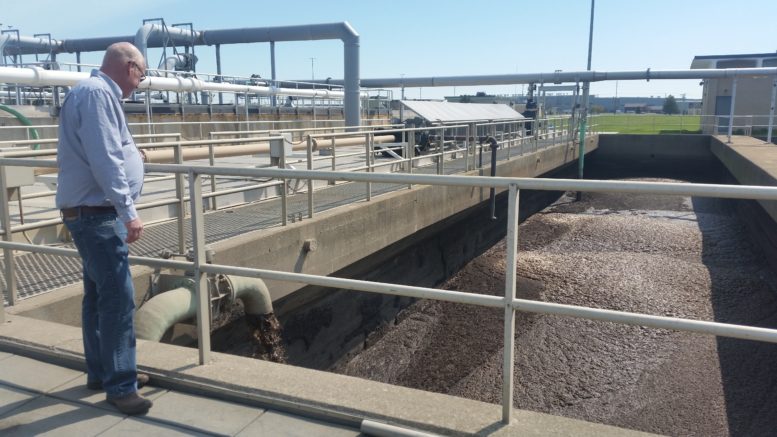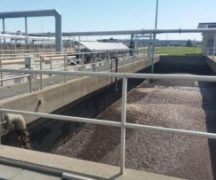By JAN LARSON McLAUGHLIN
BG Independent News
Bowling Green has not given up on trying to take the stink out of its sewage treatment process.
Work began earlier this week to construct a new biosolids aeration building at the wastewater treatment plant on Dunbridge Road – with the help of a $5.4 million loan from the Ohio EPA.
Getting rid of the foul smells from the wastewater plant has been an ongoing battle for Bowling Green.
The intermittent pungent smells have been the source of complaints not only from nearby businesses and BGSU, but also during large outdoor events, like the soccer tournaments held south on Dunbridge Road.
“The odor that comes out of those tanks can be pretty offensive,” Bowling Green Public Utilities Director Brian O’Connell said. “We’re just trying to be good neighbors.”
In 2016, the city enlisted bugs to help treat its wastewater. The city made changes to the aeration and “tricked” microscopic bugs already in the wastewater to eat the phosphorus before it leaves the plant.
A misting odor neutralizer was added to the biofilter’s exhaust fan in 2016, but it had limited success.
In 2017, the city invested in bigger fans and carbon filters, so the treated sewage would come out smelling better.
Then in 2019, the city took a step toward the next update, putting concrete lids on the biofilter tanks. The new concrete covers allow for the proper environment to treat the biosolids. The old aluminum tank covers were worn and the air seals that were supposed to keep the odors inside the tanks allowed the odors to escape untreated.
“We ensured any odors in the tanks will go through the aeration process,” O’Connell said.
With every improvement, the pungent odors emitted from the site lessened – but never completely disappeared.
So this year, the city will get rid of giant blowers at the site and install smaller, more efficient and more targeted blowers.
O’Connell explained that the bacteria that consumes the organic materials in the wastewater require air.
“If they don’t consume the right amount of material, that produces ammonia” – and that produces nasty odors, he said.
So the city is constructing a new building with seven new blowers – each one dedicated to provide air to a different tank, plus one back-up blower.
“Those should provide the exact amount of the air to the tanks,” O’Connell said. “We should be able to reduce the odors. We will be able to optimize the aeration process.”
The construction at the wastewater treatment plant is expected to last throughout 2021.
“We think that is going to take care of most of the problem,” O’Connell said. “With wastewater, you’re never quite sure, but we’re hopeful though.”



